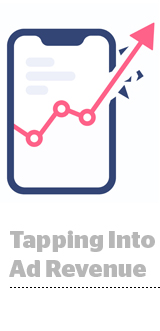
Without a way to calculate ad revenue per user, optimization is just an educated guessing game.
“I wouldn’t call it a complete blind spot, but the process is definitely not as efficient as it could be,” said Jeff Gurian, VP of marketing and ad monetization at Kongregate, a mobile and PC game publisher acquired from Gamestop last year by Swedish entertainment company Modern Times Group.
For the last two months, Kongregate has beta tested a solution from mobile ad network and mediation platform ironSource that measures ad revenue linked to specific users to help marketers understand revenue generated by their advertising. The tool became generally available on Wednesday.
Armed with that data, user acquisition (UA) specialists can properly evaluate channels and better attribute credit.
IronSource is also partnering with Adjust, AppsFlyer, Kochava, Tenjin, Singular and other attribution providers to make ad revenue data accessible through their respective dashboards.
Without direct access to this data, the easiest way to estimate ad revenue is to whip up an average and apply it equally across all users. That’s what Kongregate did, but it’s far from ideal, Gurian said.
“It’s not a true representation of users, because not all users are equal in how much ad revenue they provide,” he said. “With user-level ad revenue data, you can be a lot more precise about what you buy.”
Although app marketers have a good sense of how they’re monetizing with in-app purchases – who is buying what and when – the same hasn’t been true for advertising, said Yevgeny Peres, VP of growth and developer solutions at ironSource.
But as apps, particularly hypercasual games, increasingly turn to advertising as their primary monetization channel, it doesn’t make sense to optimize everything for the big spenders.
Kongregate, which generates roughly 100 million mobile ad impressions per month, makes around 30% of its revenue from advertising, up from nothing three years ago, partly because the measurement tools and systems are getting better.
“The idea here is to help developers really optimize toward return on ad spend for the first time,” Peres said, “to help them be more confident that they’re investing in the right places, because they know the measurement is correct.”
But it goes beyond just informing UA or targeting which channels to spend on.
Kongregate uses the ad revenue data it pulls from ironSource to tweak its product. For example, if Kongregate can identify the lifetime value of users who watch ads, it can develop initiatives to woo those people to convert on an in-app purchase, or it can find users who don’t watch ads or convert, and ease them toward monetization.
“There are a lot of different CRM-type levers we can pull if we know the exact ad revenue for each user,” Gurian said. “We can use this data to encourage the next behavior we want to see, whether that’s getting someone to consider an IAP package, getting them to engage with ads or simply just reaching a user we’ve never touched before.”
This post was syndicated from Ad Exchanger.


More Stories
How NBC News’ Election Night Digital Wins Forecast the Future of Broadcast News
Around the World: AI & Christmas, a Temu crackdown and Aussie influencers
Here’s a Short Roundup for This Week